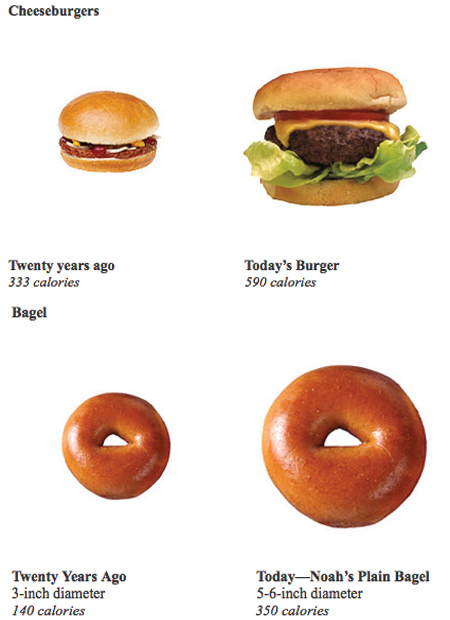When you grab a bite to eat somewhere, there are particular decisions you have to make. Obviously, what you’re going to eat but also what size you’re going to order. You may have noticed how the different sizes vary by each restaurant/fast food chain. What you may not have noticed is a small order at one place might be considered a medium at another. For example, you’re at Burger King and ask for a small order of fries because you want to be conscious of the amount you’re eating, but if you had gone to McDonald’s that same small order at Burger King would have been considered a medium. Would this make a difference in your decision making?
Aradhna Krishna, a marketing professor at the University of Michigan, has performed studies over this labeling phenomena. What she found is that food sizes have become larger over time. “So, that same hamburger has become bigger, the french fries have become bigger, and again this is leading to obesity,” said Krishna on NPR.
Krishna wanted to learn if the label was truly making a difference in what size consumers bought. In order to do so, she conducted an experiment where she offered participants a cookie. One was given a label as “medium” and the other was given a label as “large.” The catch was that both were actually the exact same size. The results proved the theory and showed that more people chose the “medium” cookie over the large.
“Just because there’s a different size label attached to the same actual quantity of food, people eat more. But also, think they’ve not eaten as much,” said Krishna. “Sizes should be more uniform and that will only help the consumer because you’ll know what you’re getting.”
According to the Centers for Disease Control and Prevention, a “large” soda today is six times bigger than a “large” soda in the 1950s. Past studies have also shown that by eating off a smaller plate, people can sometimes overestimate the serving size they’ve been given, and drinking beer from a glass that’s straight as opposed to one that’s curvy can help people keep better track of how much they’ve drank.
Something else that might be helpful to know is that certain places may display their nutrition facts differently. For example, Wendy’s 32 ounce medium drink is actually only showing nutrition facts for a 2 ounce drink due to the space the ice is taking up in the cup. Therefore, it’s easy to misinterpret how many calories 32 ounces of soda really is.
Another way labels might be bending the truth is the way they’re displayed through clothing. Marketers at certain stores will give a piece of clothing a small label when it would be given a large label elsewhere. This is called “vanity sizing.” The strategy here is to make customers feel satisfied by thinking they can still fit into a size “small.” Krishna stated, “What used to be a size 8 in the ’50s has become a size 4 in the ’70s and a zero in 2006”.
This trend in vanity sizing, where the smalls and larges vary by designer and retailer, is no secret.
“Some women do get satisfaction of purchasing a smaller size than what they imagined themselves being. However, consumers have caught on to this game that designers/retailers have played for so long. We now know things like… ‘I’m a size 0 in Brand A but a size 2 in Brand B’ — I feel that it has now confused the consumer and possibly made purchasing online even more difficult,” Chelsa Skees, a New York fashion stylist, told us. “People now need to try things on because you never know what sizing system you’re dealing with unless its a brand you’ve bought from before.”
So what does all this mean exactly? People are trusting labels over what their bodies are actually showing them. When labels have the upper hand in trust, it becomes too easy to eat and drink much more than should we have; and we’re squeezing in to jeans we probably shouldn’t.
“At the end of the day all we really want is our clothing to fit and flatter our figures,” said Skees. She works with a fashion company in New York called Quincy, which recognizes the sizing debacle consumers face. “We know how frustrating it can be for women to purchase clothing by arbitrary sizes so we use a smarter sizing system where we consider bust to waist to hip ratios to come up with appropriate sizing.”
If we were given the “truth” on sizes, in both the food and clothing industries, would this make a difference in your everyday purchase decisions? Would obesity statistics have a significant difference?
“It’s not a question of being lied to,” Krishna said. “It’s a question of do you want to be lied to.”
Also Read:
The Joy of Cooking, Super Sized!
Yoga Pants for Brunch and Errands? Blame the Fashion Designers
Pants Are Bigger than They Claim
image via treehugger.com
